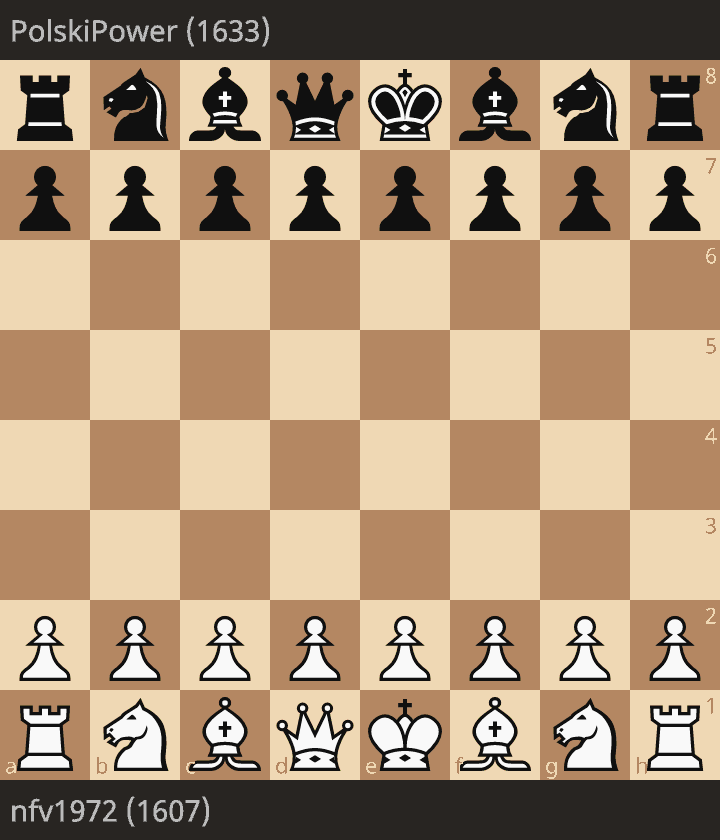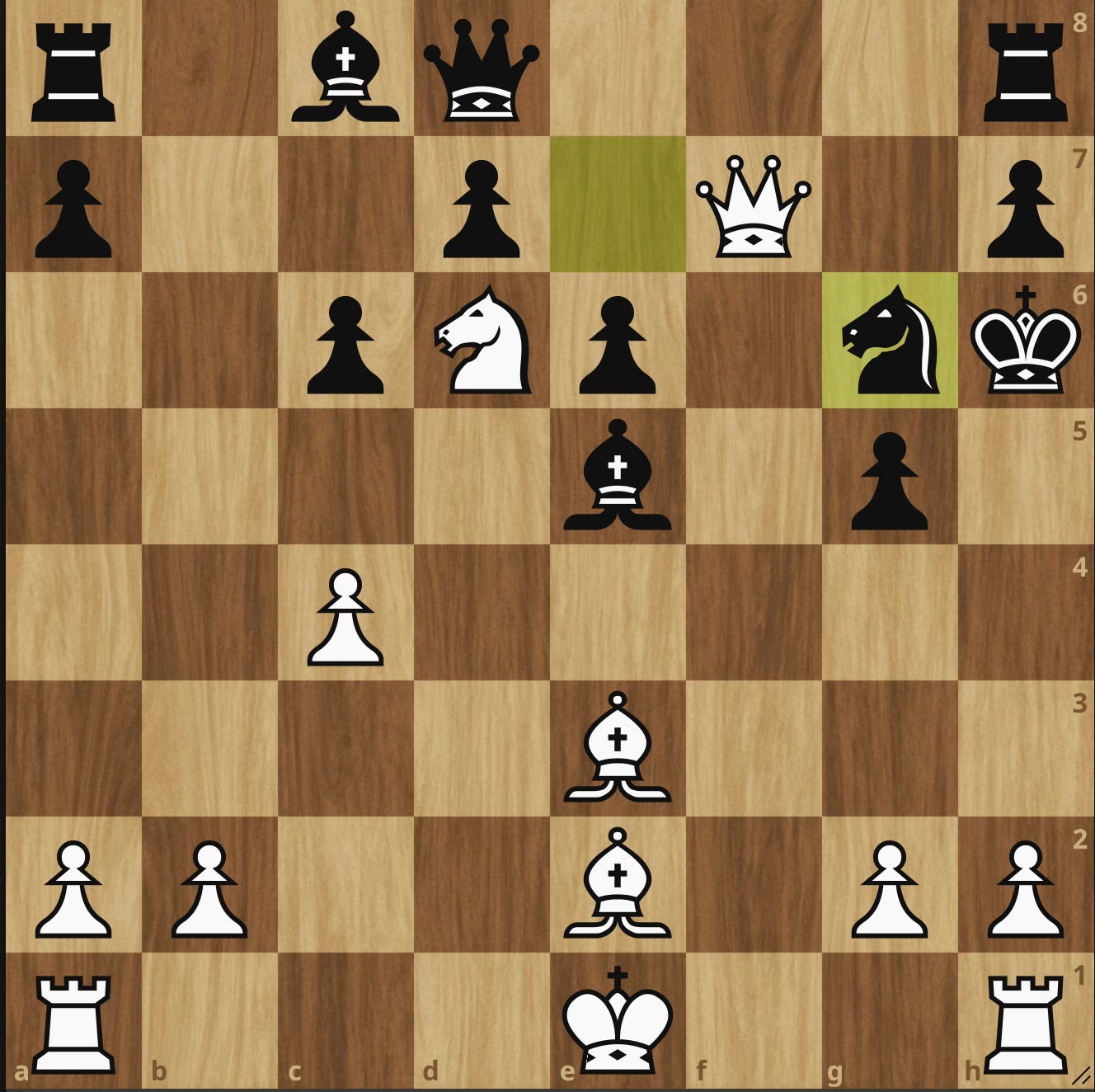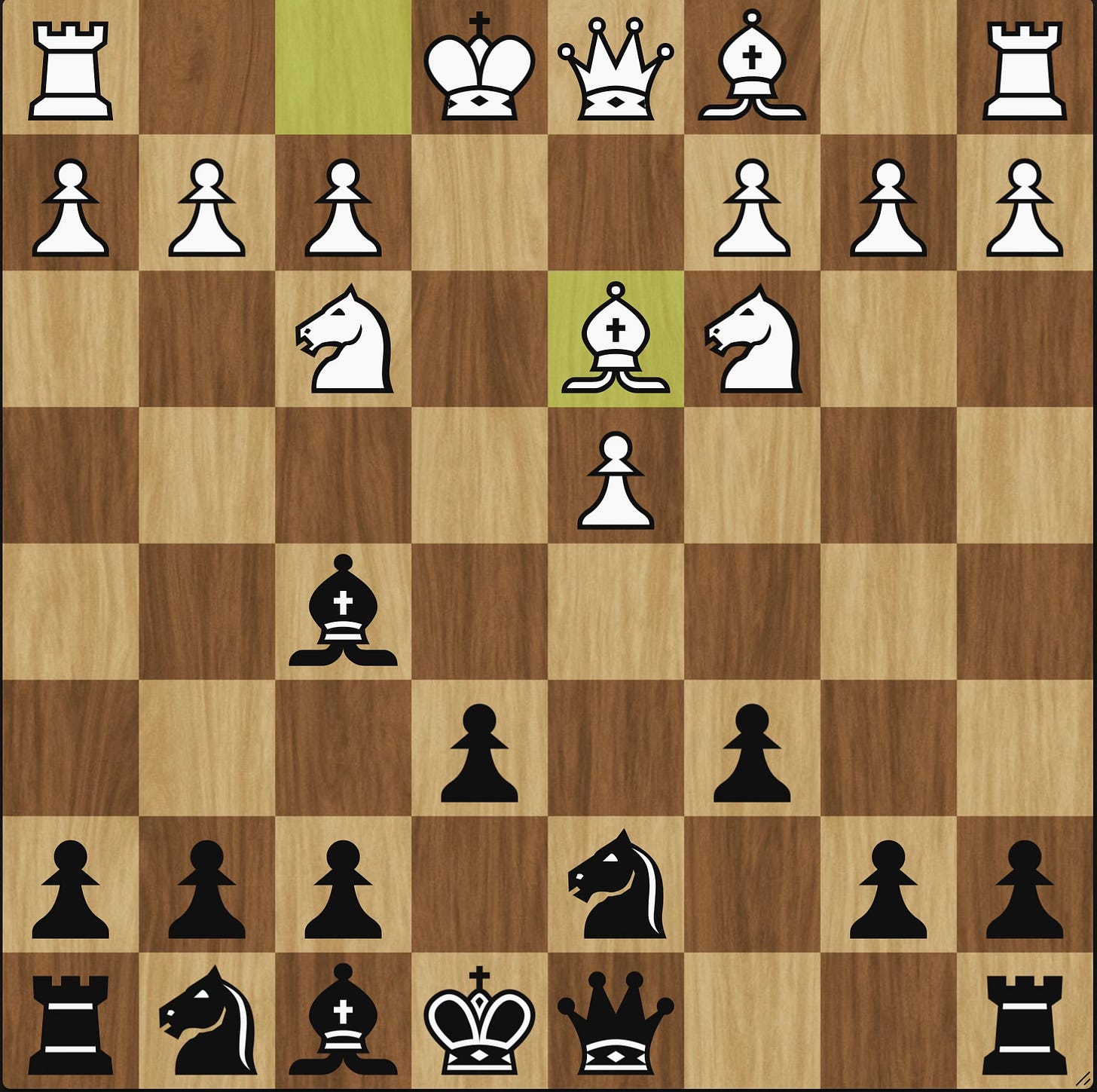Simple(r) Chess: Get active
Activity is the key
Welcome back to Chess in Small Doses. This is the third installment in Simple(r) Chess, my attempt to simplify how to approach chess as an adult improver. There’s so much to think about or focus on while improving, much of which isn’t all that helpful. After a few years of work I’ve come to believe that chess (to borrow others’ phrase) is simple but not easy. This series is meant to focus on those simple but not easy aspects. First we talked about taking a time out. Second we talked about asking questions to find a good move. Today, we’re going to talk about getting active.
Years ago the JAMA published a study showing a clear link between levels of activity and longevity. That was just one of many studies to make the same point. If you want health, you need to get physically active. While I might argue that physical activity would improve your chess too, that’s not the activity I mean. Instead, we’re going to talk about piece activity. I believe there is a clear link between piece activity and winning chess games. To make that argument, I’m going to show you probably the best game I’ve ever played (what my coach at the time called “Nick’s immortal game”).
My Immortal Game
I was paired in a classical tournament via the Chess Dojo against a closely rated player using Chess.com. I had known ahead of time the pawn structure I was likely going to get but I was just trying to play solid moves. After 7…e6? I knew there was a hole on d6 that I wanted to exploit. The rest just sort of flowed. We eventually got to this position…
It’s White to play. Black has 2 pieces developed (not including the king) and White has 4. The challenge to me here was to keep the attack going without letting Black recover. My d6 knight is hanging and unless I keep up the pressure, my queen might get trapped. I have only one move that will bring more pieces to the party: h4! The rook on h1 X-rays the king and threatens mate. No matter what Black is in trouble now. The game continued Bg3+ Kd1 Bxh4 Rxh4!! Nxh4 and Black is lost. Many roads lead to mate now.
Why?
Now a question, why did I win? I am no Paul Morphy… heck I’m not even Woody Harrelson! It’s not because I saw 20 moves deep or had the latest AlphaZero line in this opening. The answer lies in simple math. It is simply more probable that I have a good move than my opponent in the position because my pieces are more active. Look again at the position in question above and count up the total number of possible legal moves here for White and for Black.
Possible moves for White: 61
Possible moves for Black: 26
It’s my move and I have 35 more possible moves than my opponent does! That alone means I’m more likely to have a good move as one of my options. Developing more pieces increases the legal moves I have and increases the probability that one of those moves will be very strong.
Passive = Weakness
I recently read a book called The Zugzwang Method* which went to great lengths to make a point: We’re competing for control of the board with every move. Every passive move we make hurts us and helps our opponent due to the zero-sum nature of chess. Of course the opposite is true as well. Every active move we make helps us and hurts our opponent. Take this position for example.
This is possibly the single best bishop I’ve ever had. White is only up a pawn but look at the activity of the bishop compared to the knight! The knight literally has no safe moves and even if it did move to b8 that would allow White to invade with Rc7. The difference in scope and activity between these two minor pieces decided the game in White’s favor. The Black knight is so weak that it hardly matters to the game. The message is clear, make your pieces active or suffer the consequences.
Principled play
In almost any book or article on basic chess principles you’re likely to come across some familiar concepts.
Develop your pieces towards the center
Never move the same piece twice in the opening
Play with all your pieces all the time
Whatever you source you look at, the advice is consistent: Mobilize your pieces! Get them active! The math works in favor of the more active piece. In a very real sense, both players are racing to get their pieces out first and whomever does has the advantage. If we want to win that race we need to get active and do it quickly. Consider the position below.
It’s move 16 and White has both rooks developed, has two knights forward, and a queen ready to jump into the action. I’ve played one too many passive moves and got behind in development. My knights have limited options and now I need to play defense a bit. I lost the race to get developed first, and I went on to get crushed here. By move 20 I was in real trouble and I resigned after move 24.
More pieces developed means more options. More options means a greater chance you’ll have a good move available to you. That is a very simple concept that everyone who plays chess can understand… but many don’t apply it. Recall Dr. Gwande classified this sort of behavior as an error of ignorance, where we fail to apply what we already know. To prove the point, let’s look at another position.
This was my first ever classical game on Lichess. My opponent has just played Be3 and threatens to take on c5. Instead of developing a piece with Nd7 I instead played Bxe3. After Qxe3 White has 3 pieces developed and Black has 1. By taking on e3 I helped my opponent get better developed and have a better position. Not surprisingly I went on to lose this game.
So why do we do this? Why do we fail to apply this simple concept? Let me share an opinion… we’re thinking too much.
Thinking vs knowing
Years ago I studied Spanish in school. I eventually got to the point where I could think in Spanish. Of course when school ended, I went back to my English only world and lost the ability. Since then I have to try and translate in my head on the fly… not fluent.
That’s what I think it happening here for so many improvers. We’re thinking our way through each move instead of playing fluently. The amount of mental effort spent running through checklists or trying to remember lines is not small. It’s said that a GM will see more but think less than lesser rated players. They’re more familiar with the structure, ideas, and options in a position.
Thinking for amateurs means you have to remember to remember what to look for. We look for things like threats, checks, captures every move. We’re looking for tactics in every move and sometimes we see what looks like one, but since we’re amateur it’s probably not as good as we think. Working on things like intuition, pattern recognition, and calculation will increase chess fluency and reduce our cognitive burden. Still, there is a much easier alternative to thinking through every possible move.
Active = Strong
While chess may never be easy, there’s a simple solution for us improvers: Just make your pieces active. Don’t know what to do? Develop a piece. Not sure what to do next? Take a piece and make it better. Push them forward, improve their scope. If you can’t do that, try to make your opponent’s pieces less active.
It’s so simplistic as to almost be insulting. We’re told that tactics decide most of the games of non-master level players, and while that’s true, none other than Bobby Fischer noted “Tactics flow from a superior position.” How do you get a superior position? Be the first the get your pieces out and active!
Every time I’ve ever tried to “make” a tactic work (as in forcing the issue) I’ve been worse off. Every time I let the game come to me, I find tactics and am better off. The lesson for me is just focus on making my pieces as active as possible. The tactics will flow from that.
Right now I have a simple goal for each game - get fully developed as fast as possible. I’m trying to get all my pieces (including the rooks) active within 15-20 moves to give myself the greatest probability to win. It doesn’t always happen since my opponent has a say in things, but it’s my opening focus. After that I just want to play solid moves that increase my piece activity. It’s not that I don’t think about checks and captures, it’s just that I’ve saved that for the blunder check. It’s enough at my level to simply focus on increasing activity.
Take a minute and look at your last 5 games. Were you developed by move 15? Were your rooks centralized move 20? Or had you started the tactical fight early? If so just make things easier for yourself. Make a goal to be the first to get your pieces out and get them active. Put them on squares that control the center and influence the game. The more possible moves we have, the more likely we’ll find a good move and win.
Thank you again for reading. I would appreciate any comments you have or your thoughts. Next time we’ll continue the Simple(r) Chess series with the fourth one: safety first.
(*for those curious I cannot recommend The Zugzwang Method as the book suffers from translation errors and some other uneven parts in the second half. However, the first half is excellent and provided a lot of fresh takes on improving at chess.)








Hi! Thanks for your post. I believe all the piece positions are incorrect in this section -- they would be correct if the board and colors were flipped:
"My opponent has just played Be3 [Bd3] and threatens to take on c5 [f5]. Instead of developing a piece with Nd7 [Ne7] I instead played Bxe3 [Bxd3]. After Qxe3 [Qxd3] White has 3 pieces developed and Black has 1. By taking on e3 [d3]...."
Great article. Thanks Doc